- Traditionally Handcrafted
- Customizable
- Shipped Direct From The Armory
- Best Price Guarantee
- World wide delivery
SKU: TYH-1
$289.99 Original price was: $289.99.$184.95Current price is: $184.95. $184.95
Select between Materials more common in the Sengoku / Muromachi or Edo Era.
[table id=120 /]
[table id=122 /]
[table id=122 /]
[table id=122 /]
[table id=122 /]
[table id=122 /]
Select the Fabric you would like used to make your Belt (Himo)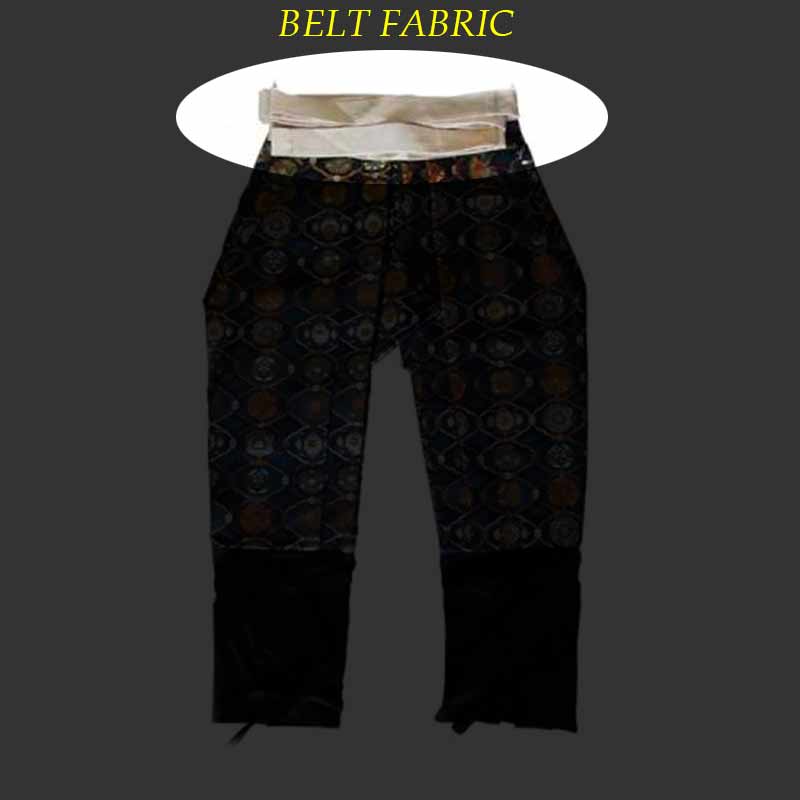
Select the LACE COLOR to tie the WRISTS, ANKLES & CHEST
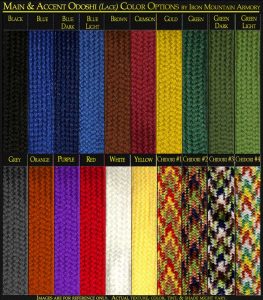
Select if you would like a MON to be Printed or Embroidered onto your Hakama top.
Select the COLOR of the MON you would like.
Add a mon to the CHEST of your HAKAMA SHITA
Add a MON to the SLEEVES of your HAKAMA SHITA.
Added to the Top / Middle of your sleeve.
Add a mon to the BACK of your HAKAMA SHITA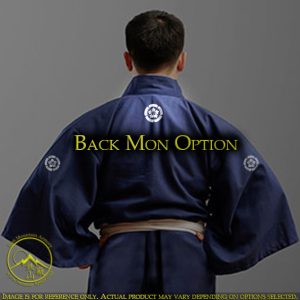
[table id=123 /]
[table id=123 /]
Custom measurements you provide are for reference only. Alterations may be made for a proper traditional fit as deemed necessary by our seamstress.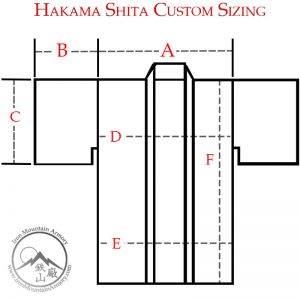
Wrap the tape measure under your armpits, around the widest part of your chest. Don't puff out or flex your chest.
Place one end of the measuring tape over the back center of your neck (over your spine). Run the measuring tape over your shoulder, and let it hang down to your desired sleeve length. * LONG KIMONO SLEVE: Measure to the center of your palm.
Measure from the top of your arm, straight down to the desired length you would like your sleeve to hang.
PLEASE NOTE: You are measuring width and NOT circumference. 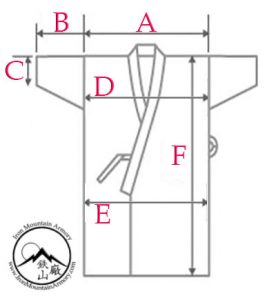
Stand straight. Place one end of the measuring tape on the top center of your shoulder (shirt seam), measure down to your knee, while following the contour of your body.
Please tell us your Height so we can better reference your sizing.
Custom measurements you provide are for reference only. Alterations may be made for a proper traditional fit as deemed necessary by our seamstress.
Standing normal, wrap the tape measure around your waist, just above your belly button.
Following the contour of your body (stomach), measure the distance from both upper outer edges of the hip bone “iliac crest” above the outer / center thigh.
Please measure 3 cm above the navel.
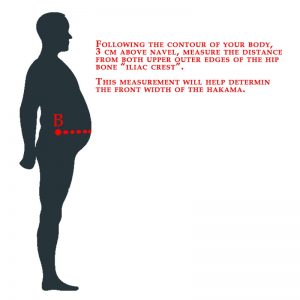
Wrap the tape measure around your hips and widest part of your buttocks.
Measure from the navel, straight down to your ankle or desired length.
Do NO follow the contour of your body.
Measure from inside groin to ankle, along the inside of the leg.
Please tell us your Height so we can better reference your sizing.
The Traditional Hitatare is the most iconic and widely recognized style of clothing worn by samurai from the Heian Period through the Sengoku Era of Japan (796–1573). This historic attire symbolizes both status and functionality, designed for comfort, mobility, and an imposing presence on and off the battlefield.
Iron Mountain Armory proudly offers a full three-piece Traditional Hitatare set, which includes:
The Hakama-Shita is an open-front shirt with free-flowing sleeves, which are attached only halfway down the body. This design allows for increased ventilation and mobility. Rope ties at the wrists allow the sleeves to be secured at the elbow when needed, making it adaptable for both combat and ceremonial use.
The Kukui-Hakama (tied hakama pants) are designed with soba (openings along the upper thigh), improving ventilation and range of motion. These pants feature rope ties at the ankles, allowing the wearer to secure them below the knee while traveling through rugged terrain or preparing for battle. When pulled up, samurai would often wear kyahan (leggings) for added protection and comfort, particularly when wearing suneate (shin armor). If the pant legs were worn down and tied at the ankle, kyahan would be used to secure the fabric, ensuring ease of movement and a secure fit under armor.
The Hitatare originated during the Heian Period and became a staple of samurai fashion by the mid-13th century. Distinguished by its large, flowing sleeves, it represented a departure from previous samurai attire, emphasizing elegance and practicality. During the Kamakura Period (1185–1333), samurai often paired the Hitatare with a tall tate-eboshi (ceremonial hat). By the Muromachi Period, the flattened ori-eboshi became the more common headwear choice. When worn with armor, samurai would don a specialized Yoroi Hitatare, slightly differing from the traditional version.
Our historically accurate Traditional Hitatare is crafted to match the authentic designs of the past, making it ideal for historical reenactments, martial arts, formal occasions, and cosplay. Our samurai clothing and accessories have been featured in the Netflix and Smithsonian Channel docudrama, “Age of Samurai: Battle for Japan.”
Product Crafting Time: Please allow our experienced seamstress at Iron Mountain Armory an average of 5 to 8 days for processing and crafting your Traditional Hitatare Samurai Clothing Set. This ensures precise craftsmanship and high-quality historical accuracy.
Accessories:
[table id=PF /]
The Traditional Hitatare is the most iconic and widely recognized style of clothing worn by samurai from the Heian Period through the Sengoku Era of Japan (796–1573). This historic attire symbolizes both status and functionality, designed for comfort, mobility, and an imposing presence on and off the battlefield.
Iron Mountain Armory proudly offers a full three-piece Traditional Hitatare set, which includes:
The Hakama-Shita is an open-front shirt with free-flowing sleeves, which are attached only halfway down the body. This design allows for increased ventilation and mobility. Rope ties at the wrists allow the sleeves to be secured at the elbow when needed, making it adaptable for both combat and ceremonial use.
The Kukui-Hakama (tied hakama pants) are designed with soba (openings along the upper thigh), improving ventilation and range of motion. These pants feature rope ties at the ankles, allowing the wearer to secure them below the knee while traveling through rugged terrain or preparing for battle. When pulled up, samurai would often wear kyahan (leggings) for added protection and comfort, particularly when wearing suneate (shin armor). If the pant legs were worn down and tied at the ankle, kyahan would be used to secure the fabric, ensuring ease of movement and a secure fit under armor.
The Hitatare originated during the Heian Period and became a staple of samurai fashion by the mid-13th century. Distinguished by its large, flowing sleeves, it represented a departure from previous samurai attire, emphasizing elegance and practicality. During the Kamakura Period (1185–1333), samurai often paired the Hitatare with a tall tate-eboshi (ceremonial hat). By the Muromachi Period, the flattened ori-eboshi became the more common headwear choice. When worn with armor, samurai would don a specialized Yoroi Hitatare, slightly differing from the traditional version.
Our historically accurate Traditional Hitatare is crafted to match the authentic designs of the past, making it ideal for historical reenactments, martial arts, formal occasions, and cosplay. Our samurai clothing and accessories have been featured in the Netflix and Smithsonian Channel docudrama, “Age of Samurai: Battle for Japan.”
Product Crafting Time: Please allow our experienced seamstress at Iron Mountain Armory an average of 5 to 8 days for processing and crafting your Traditional Hitatare Samurai Clothing Set. This ensures precise craftsmanship and high-quality historical accuracy.
Accessories:
[table id=PF /]
| Weight | 0.25 kg |
|---|---|
| Dimensions | 32 × 32 × 6 cm |
You must be logged in to post a review.
Our website is currently being remodeled to serve you better and will be launching soon with exciting updates! In the meantime, please click the link below to continue shopping on our current site. We appreciate your patience and support!
Visit Our Online Store:
Reviews
There are no reviews yet.